20 Queens at the Jardin du Luxembourg


- SUBSCRIBE
- ALREADY SUBSCRIBED?
BECOME A BONJOUR PARIS MEMBER
Gain full access to our collection of over 5,000 articles and bring the City of Light into your life. Just 60 USD per year.
Find out why you should become a member here.
Sign in
Fill in your credentials below.
Among the many delights of the Jardin du Luxembourg is a stroll past the 20 statues of queens which encircle the boating pond in front of the Palais du Luxembourg. The larger-than-life marble statues are mounted on plinths, reminders of many different periods of history: the Dark Ages, the medieval period, the Renaissance. Their faces look out at you from across the centuries and their romantic names exert a pull: Sainte Clotilde, Clémence Isaure, Valentine de Milan.
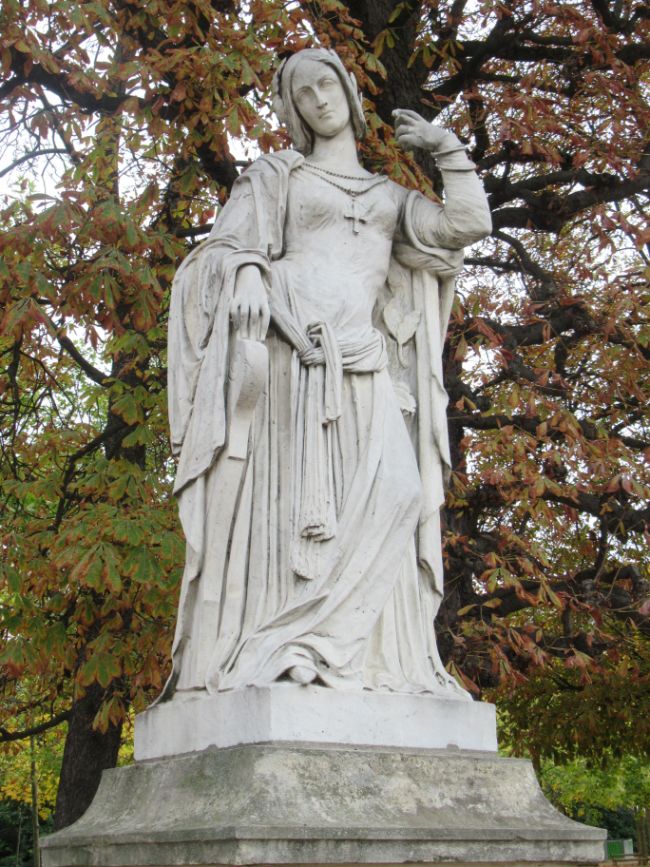
Clémence Isaure. Photo credit: Marian Jones
But there is mystery too, because in over a thousand years of monarchy, France never had a queen who ruled in her own right. A mix of law, tradition and raw male determination to hold on to power saw to that. Marie Antoinette and Eleanor of Aquitaine, for example, were queen consorts, that is queens only because they were married to a king. And, to add to the intrigue, neither of them features here. The selection was made personally by King Louis-Philippe in the 1840s: 20 women who came to be known collectively as “Reines de France et Femmes Illustres.” That is “Queens of France and other Remarkable Women.” Who, then, were they?
Perhaps we should start with Marie de Medici, (1573-1642) whose home and garden this once was. She was crowned as queen consort in 1610, the wife of Henri IV. But on her husband’s assassination the very next day, she became regent, ruling on behalf of their 8 year-old son, the future Louis XIII. Four years later, she refused to resign, as had been agreed, and was removed in a coup. Perhaps she felt that at only 12, Louis would be manipulated by those around him, although her later actions tell us that she was also reluctant to relinquish her powers. By 1619, she was organizing an uprising against her son, the so-called “War between Mother and Son.” Eventually, after exile, she returned to Paris, settled in the Palais du Luxembourg and spent her last years in Paris redesigning its grounds. Further intrigue and conflict with Cardinal Richelieu led her to depart France again in 1631, never to return. She died in exile in Cologne, Germany in 1642.
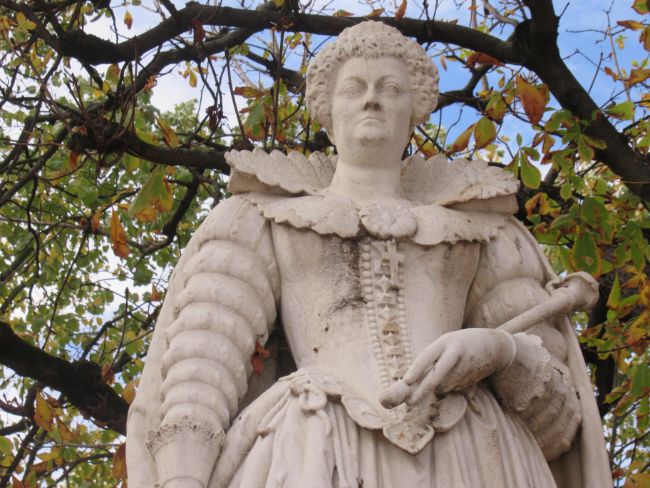
Marie de Medici. Photo credit: Marian Jones
There are other queens here who ruled as regents. Blanche de Castille (1188-1252), wife to Louis VIII, also ruled twice on behalf of their son, Louis IX. On the death of her husband, the new king was a minor, but his fearsome mother made sure he was crowned within a month, out-manoeuvering all who objected. Blanche then traveled south with Louis, where rebellions needed to be quelled, neatly avoiding those who sought to capture them. When Louis became king, Blanche retained a powerful influence at his court and later in his reign, when Louis left France to go on crusade, it was his mother whom he asked to rule in his place.
One of the 15th century’s most powerful women was Anne de Beaujeu (1460-1522), who ruled as regent until her brother, Charles VIII came of age. Although in a caretaker role, she was shrewd and capable, respected throughout Europe as “Madame la Grande.”

Blanche de Castille. Photo credit: Marian Jones
The inclusion of Sainte Geneviève and Sainte Clotilde tells of the arrival of Christianity in France. Geneviève (423-512), the Patron Saint of Paris, was originally a peasant girl from Nanterre who is said to have led Parisians in prayer and saved the city from attack by Attila the Hun. And Clotilde (who died in 545) was a Burgundian princess who became queen as wife to Clovis. An early Christian, she worked hard to convert her husband to her faith. He eventually agreed to be baptized in Reims Cathedral and the fact that Christianity spread through France is often accredited to her. It’s an example of the influence queens could exert even though it was their husbands who ruled the land.
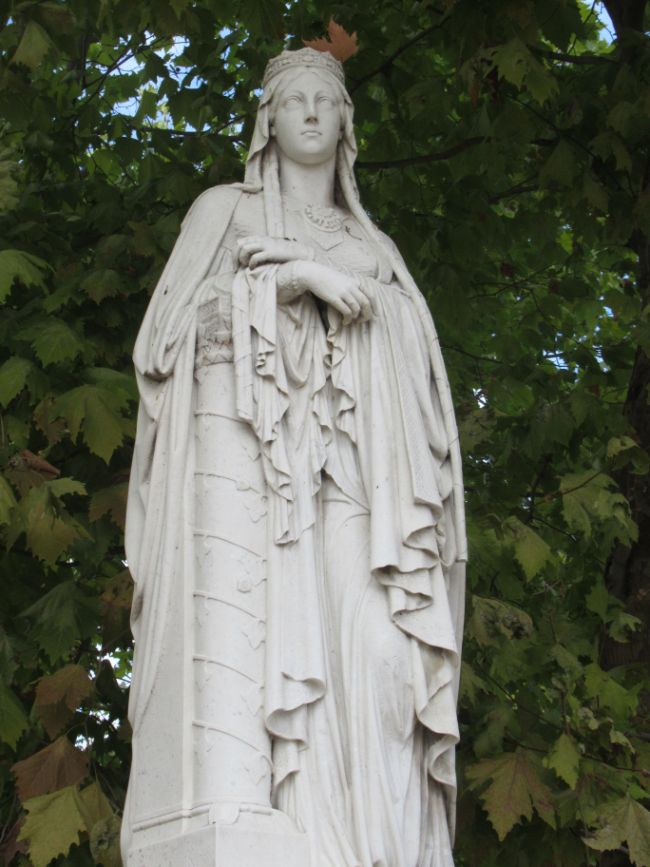
Sainte Clotilde, courtesy of Marian Jones

Sainte Geneviève. Photo credit: Marian Jones
Other statues recall women who exerted their influence through their children and none more so than Berthe, sometimes called Bertrade (710-783), mother of the mighty Charlemagne, first Emperor of The Holy Roman Empire. Her statue shows her holding in her hand a model of him, newly crowned by the pope and sitting astride his throne. She lived at his court throughout her life and he always respected her. Louise de Savoie (1476-1531) was widowed at 19, and moved to the court of Louis XII with her children, overseeing their education and opportunities so successfully that her son became first a favorite of the king, then his son-in-law and finally his heir, eventually succeeding him to the throne as Francis I.
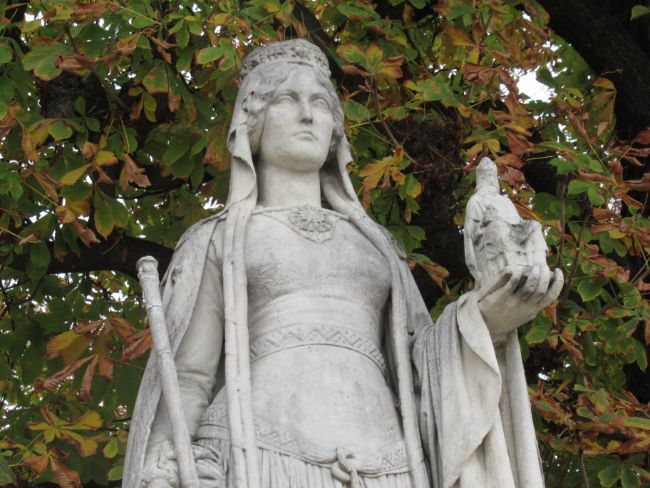
Berthe, mother of the mighty Charlemagne. Photo credit: Marian Jones
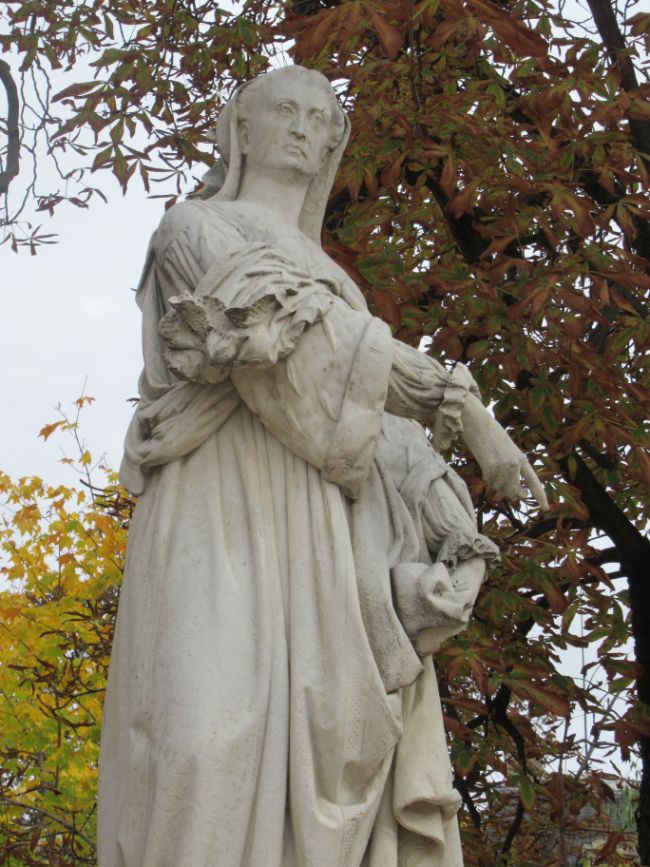
Louise de Savoie. Photo credit: Marian Jones
Several of the statues are of queens who ruled abroad, including Mathilde, Duchess of Normandy, (1031-83) who married William the Conqueror and became the mother of two more kings of England, William II and Henry I. Margaret of Anjou (1429-82) married Henry VI of England and came to rule on his behalf as he succumbed to illness and insanity. Mary Stuart (1542 – 87) left Scotland as a child to grow up in the French court and marry the heir to the French throne. When her husband died just a year after their wedding, she returned to Scotland, where she had always been queen in her own right, only to be imprisoned and eventually executed by her rival, England’s Queen Elizabeth I.

Mathilde, wife of William the Conqueror. Photo credit: Marian Jones
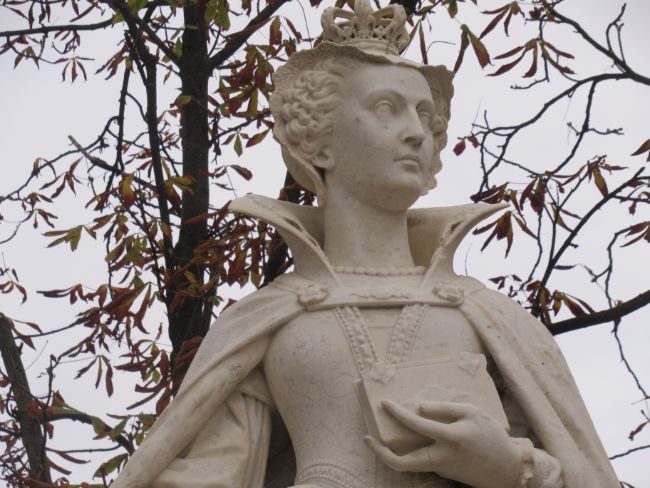
Marie Stuart. Photo credit: Marian Jones
Some of the “queens and remarkable women” were influential through their support of culture and the arts. Marguerite d’Angoulême, (1492- 49) sister of Francis I, was patron to a number of artists and writers such as Leonardo da Vinci and François Rabelais and also wrote many poems and plays of her own. She became known as the “Mother of the Renaissance.”
The beautiful Clémence Isaure (14th century) lived in Languedoc in the time of the troubadours and is thought to have founded the Academy of the Floral Games, sponsoring the annual award of gold and silver flowers to the best poets. Her legacy lives on especially in Toulouse, where she is remembered in paintings and sculptures.
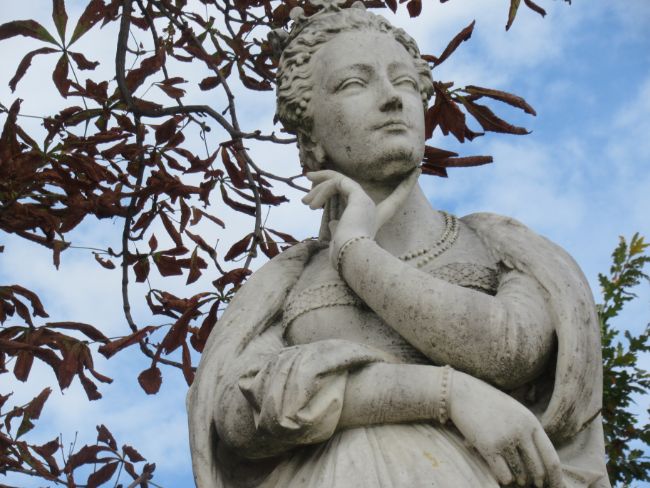
Marguerite d’Angouleme. Photo credit: Marian Jones
The stories of a number of these women reveal that they were pawns, dominated by others, like so many women of their times. Marguerite de Provence (1219-95) was both fierce and capable, yet she was made miserable by an overbearing mother-in-law. Married to Louis IX, she accompanied him to the Holy Land, proving formidable enough to take over the crusade after the capture of her husband and to raise the funds to secure his release. But she was also bullied mercilessly by her controlling mother-in-law, Blanche de Castille, who had sought her out as a suitable daughter-in-law, then done all she could to keep her son and his wife from being together except, as she put it, “when he goes to lie with her.” Blanche saw Marguerite’s only role as the production of royal babies.
The beautiful Valentine de Milan (1370-1408) was also prey to female jealousy. Married to Louis, Duke of Orleans, brother of Charles VI, she bore eight children, only then to be banished from the court by the queen. Anne Marie Louise, Duchess of Orleans, (1627-93) needed Louis XIV’s permission to marry the man she loved and he gave it, only to withdraw it three days later and banish her lover. She then spent years and much of her vast wealth campaigning without success for her lover’s release from prison, but eventually she withdrew to the Luxembourg where she died alone.

Valentine de Milan. Photo credit: Marian Jones
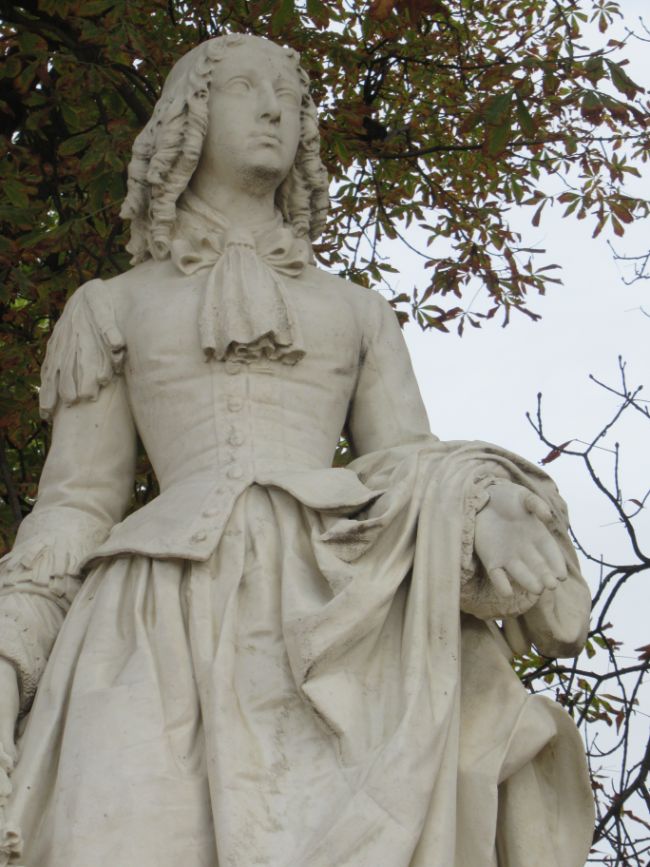
Anne Marie Louise d’Orleans. Photo credit: Marian Jones
To visit these 20 statues is to encounter many truly remarkable women from France’s past. Their stories give glimpses of the country’s history, and they also speak of the lives of women throughout the centuries in all the variety that implies. Among them are the powerful and the scheming, the influential and the repressed, each one a starting point for a fascinating story. What other monument, even in Paris, could yield so much history?
Lead photo credit : Jardin du Luxembourg. Photo credit: Rdevany/ Wikimedia commons


